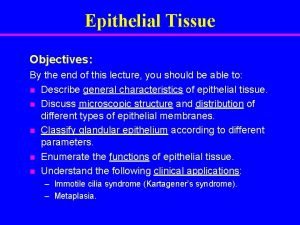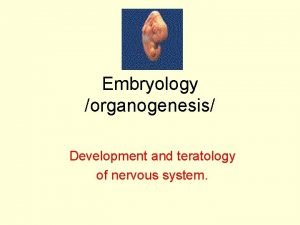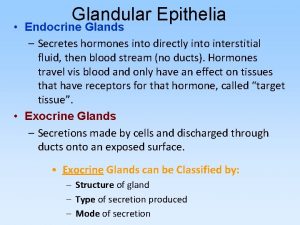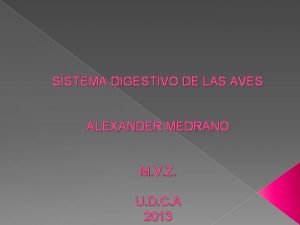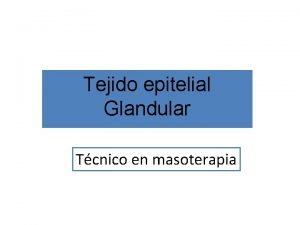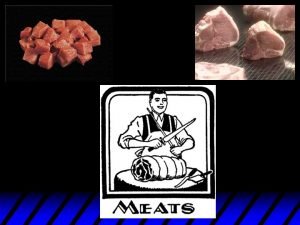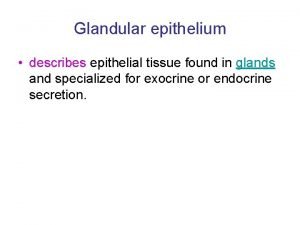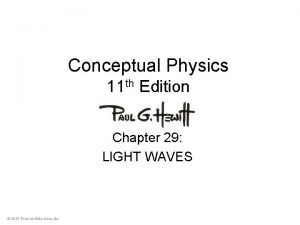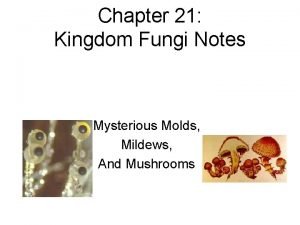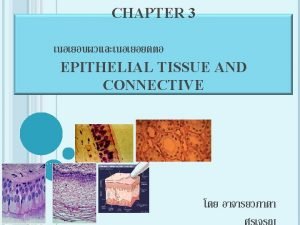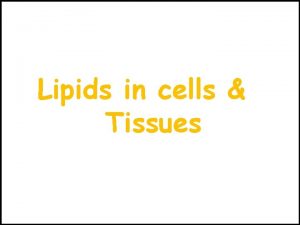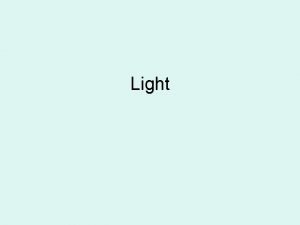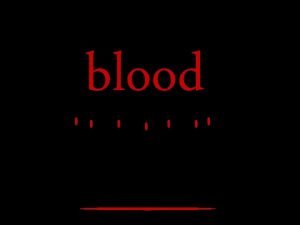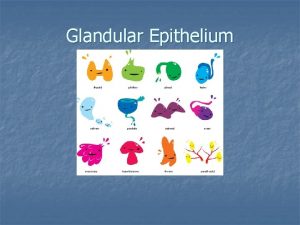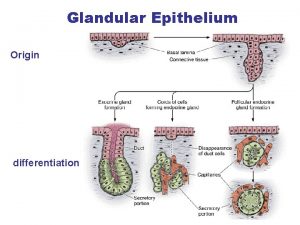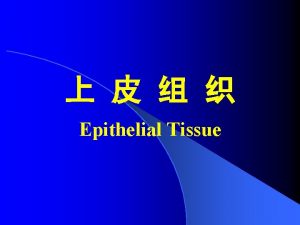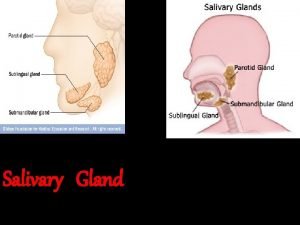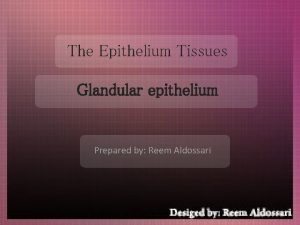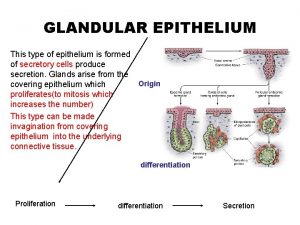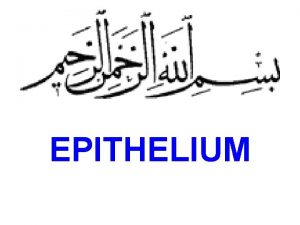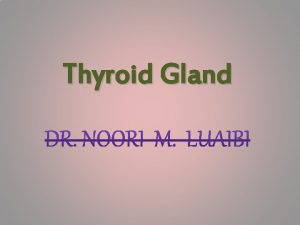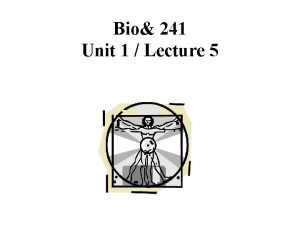GLANDULAR EPITHELIUM GLANDULAR EPITHELIUM Gland is composed of
































- Slides: 32

GLANDULAR EPITHELIUM

GLANDULAR EPITHELIUM Gland is composed of epithelial cells specialized for synthesis & secretion of a specific product.


FORMATION OF GLANDS FROM EPITHELIA

CLASSIFICATION Based on site of secretion: Exocrine glands : secrets its products onto a surface through ducts. E. g. salivary glands v Endocrine glands : secrets its products into blood stream. E. g. thyroid gland v Paracrine glands : secrets its products into local extracellular space affecting the surrounding cells. e. g enteroendocrine cells of GIT v



Based on number of cells v Unicellularcomposed of a single cell. e. g goblet cell. v Multicellular – composed of many cells. All glands other than goblet cell.

Based on mode of secretion : v Merocrine : the secretory product is delivered in membrane bound vesicle to apical surface of cell extrude their content by exocytosis e. g. pancreatic acinar cell o



v Holocrine secretion : whole cell is excreted with secretion by apoptosis both secretory products & cell debris are discharged into the lumen of gland e. g sebaceous gland tarsal gland

v Apocrine secretion : apical cytoplasm is shaded out with secretion secretory product (large lipid droplet) is surrounded by a thin layer of cytoplasm released in apical portion of cell e. g lactating mammary gland

Based on nature of secretion : v Serous gland : secretes thin watery material rich in enzymes. E. g parotid salivary gland v Mucous gland : secretes thick viscous material for lubrication. E. g sublingual gland v Mixed gland : secretes both watery & viscous material. E. g submandibular gland

Serous acinus : thin watery secretion nature of secretory granules – zymogen granules nucleus – round & centrally placed lumen small e. g. parotid gland


Mucous acini : secretion is thick viscous nature of secretory granules – mucigen nucleus flat &peripherally placed lumen large e. g sublingual gland

Based 1. ü ü ü on cellular arrangement : Simple (having unbranched duct) – Tubular Alveolar Tubuloalveolar


Tubular – ü straight (glands of large gut) ü coiled (sweat gland) ü branched (mucous secreting glands of pylorus)



Alveolar – ü Simple (urethral gland) ü Branched (mucous secreting glands of cardiac end of stomach)

Tubulo alveolar – parotid gland

2. Compound (having branched duct) – ü tubular (brunners gland) ü alveolar ( excretory portion of pancreas) ü tubulo-alveolar (submandibular gland)

ARRANGEMENT OF CELLS OF ENDOCRINE GLANDS A. Cord like arrangement: cells are arranged as cords or clumps around capillaries, e. g; most of the endocrine glands – adenohypophysis, adrenal cortex B. Follicular arrangement: cells are into follicls and the secretions are accumulated in the lumen of the follicles, e. g; Thyroid gland



DIFFERENT TYPES OF EPITHELIAL CELLS A. Serous cells: - cells are polyhedral or pyramidal shaped - Nucleus- rounded and centrally placed - in the basal region abundant r. ER are present, thus providing the basophilia of the cells

B. Mucus-secreting cells: - cells are columner - nuclei are compressed towards the base - secretory granules fill the apical pole - well developed Golgi apparatus is located above the nucleus

Steroid secreting cells: - cells are polyhedral or rounded - nucleus – centrally placed - usually rich in lipid droplets - rich in s. ER - sperical or elongated mitochondria containing tubular cristae - cells are acidophilic

Ion-transporting cells: - Invagination of the basal plasmamembrane occurs - Numerous elongated mitochondria are present along the infoldings - Known as striated cells
 Simple squamous
Simple squamous Epithelial tissue
Epithelial tissue Pituitary gland and pineal gland spiritual
Pituitary gland and pineal gland spiritual Pineal gland pituitary gland
Pineal gland pituitary gland Neural groove
Neural groove Adrenal gland epithelium
Adrenal gland epithelium Vaginal testicule
Vaginal testicule Glandular epithelia
Glandular epithelia Somatostatin function
Somatostatin function Que es el sistema glandular
Que es el sistema glandular Aparato bucal de las aves
Aparato bucal de las aves Transitional epithelium
Transitional epithelium Olocrinas
Olocrinas Insufficient glandular tissue pictures
Insufficient glandular tissue pictures Glandular epithelial tissue
Glandular epithelial tissue Ceystolith hair
Ceystolith hair Organos tejidos
Organos tejidos Glandulas compuestas ramificadas
Glandulas compuestas ramificadas Glandular meats
Glandular meats Simple branched acinar gland
Simple branched acinar gland Huygens principle features wavefronts that are composed of
Huygens principle features wavefronts that are composed of Ascomycota asexual reproduction
Ascomycota asexual reproduction Tissue is composed of a group of -
Tissue is composed of a group of - Hvac unit 31 test answers
Hvac unit 31 test answers Miscellaneous lipids
Miscellaneous lipids The poem money madness was published in the collection
The poem money madness was published in the collection How many kingdoms are there
How many kingdoms are there Modified chen notation
Modified chen notation Self portrait composed of many pieces
Self portrait composed of many pieces Self portrait composed of many pieces
Self portrait composed of many pieces Light is composed of
Light is composed of Vernon's hierarchical theory of intelligence
Vernon's hierarchical theory of intelligence What is blood composed of
What is blood composed of

